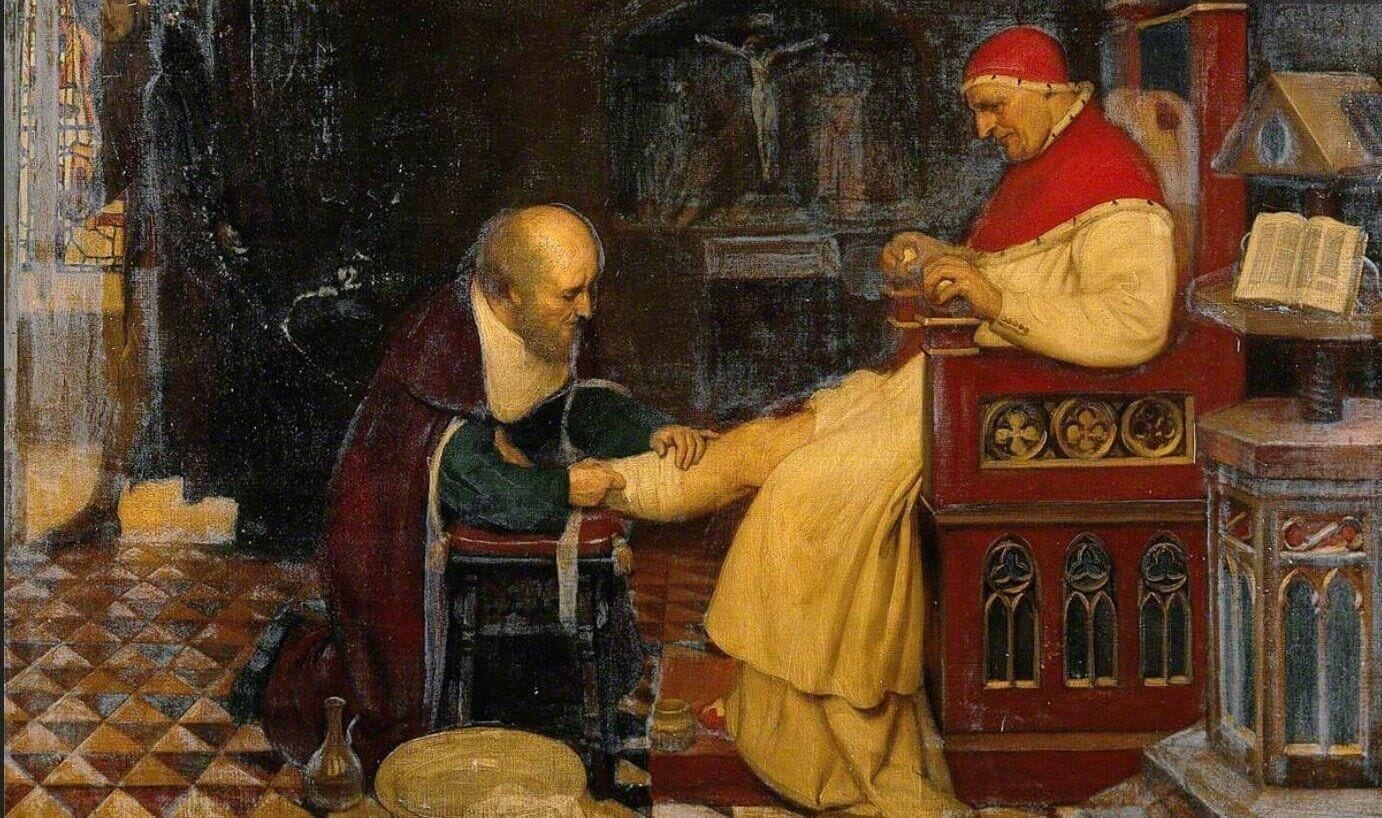
Guy de Chauliac was the personal physician of three of the seven popes forced to reside in Avignon during their so-called Babylonian captivity. Although he wrote a famous textbook on surgery, he practiced mainly as a physician, and reportedly wielded the knife mainly to embalm the bodies of dead popes but was careful to avoid using it on living patients.

He was born in 1290 in the French village of Gevandan, where his family was poor but some rich people enabled him to study whatever he liked. His formal studies began in Toulouse; he graduated master of medicine in Montpellier; took courses of anatomy in Bologna; then went to Paris (1315-1320) where he studied under Lanfranc and William of Salicet among others, and qualified as a physician, not as a barber surgeon. Yet in his memoirs he describes how he was able to operate on hernias and cataracts and was skilled in managing fractures and dislocations. He was the personal physician of Clement VI (1342-1352), Innocent VI (1352-1362), and Urban V (1362-1370).
In 1363 he wrote “Inventarium sive, Collectorium Artis Chirurgicalis Medicinae,” a lengthy and influential treatise on surgery, which he admits was very much based on Galen and Hippocrates. Written in medieval Latin, it passed through many editions and became the most influential surgical text for over 200 years, particularly in France. He urged surgeons to study anatomy and wrote that surgeons ignorant of anatomy carved the human body as a blind man carved wood. His work has been said to reflect more the teacher than the scientist and to be more didactic than scientific, representing the state of medical knowledge at his time, prescribing all sorts of salves and plasters, and believing that pus (laudable pus) was a necessary part of the healing process. He designed a bed for the patient’s physiological needs, made suggestions for the construction of hospitals, and wrote texts of astrology and dietetics.
When the Black Death arrived in Avignon in 1348, most physicians fled the city but Chauliac stayed on, treating plague patients and meticulously documenting symptoms. He distinguished between the two forms of the disease, the bubonic and the pneumonic varieties. As a precautionary measure, he advised Pope Clement to keep a fire burning continuously in his chamber and keep visitors out. He claimed to have been himself infected and survived the disease by taking liquids, figs, onions, and yeast. He recommended air to be purified, venesection (bleeding), and healthy diet, and rejected the view that Jews had caused the disease by poisoning the wells. He died around 1368.

Leave a Reply